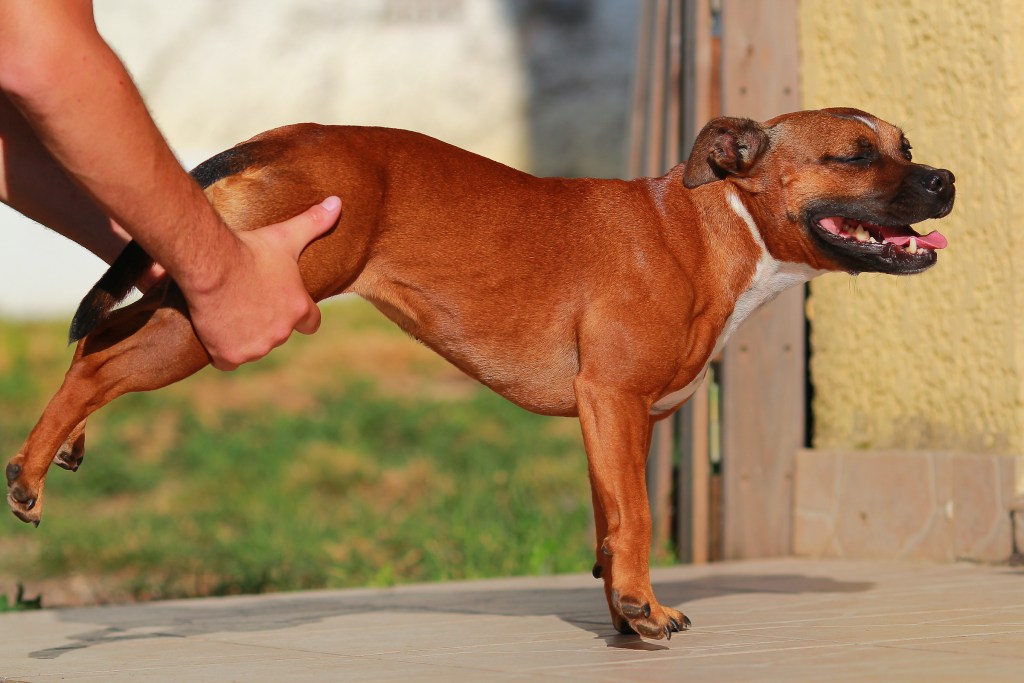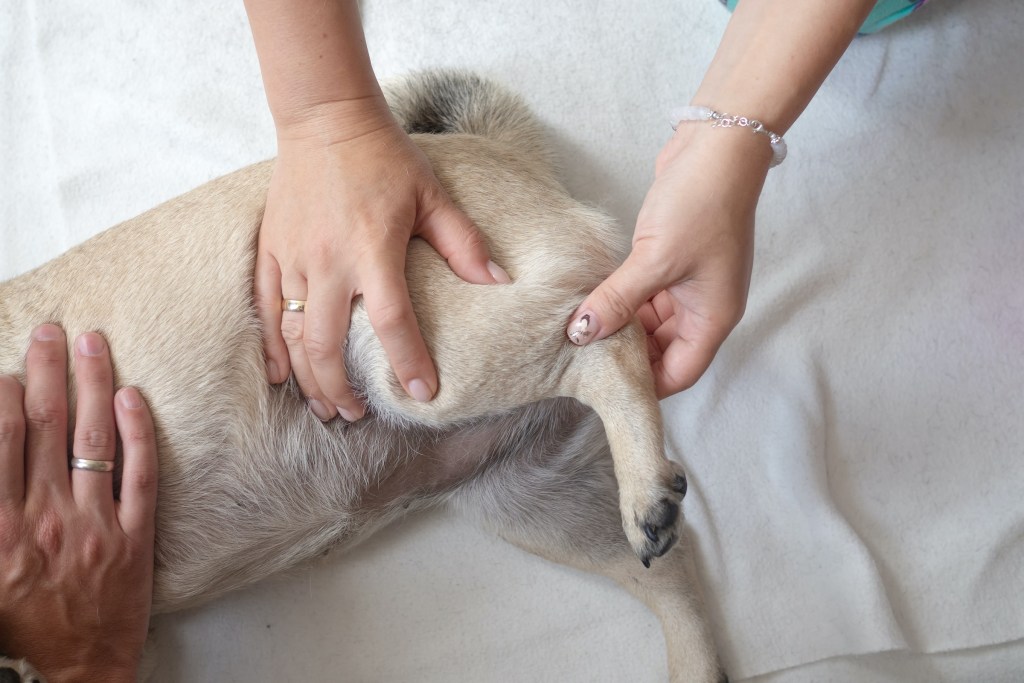If pet parents had it our way, our furry friends would never feel pain or illness. Unfortunately, though, we don’t have the power to protect our pets from everything in the world, so issues like chronic pain still exist. Before you get too worried — most medical concerns that our dogs face can be remedied with all kinds of medications and treatments, so no pup has to suffer.
Dog joint pain is one of those examples. There are a number of ways to treat it — possibly even for good — but you’ll have to find out what caused it first. You can start by looking for certain signs of dog joint pain as your buddy goes about their everyday life, then talking to your vet about the best plan of treatment. Of course, you can give home remedies a try, but it’s always recommended to consult your trusted veterinarian.
What does joint pain in dogs look like?

Before you can go about treating dog joint pain, you need to make sure that’s the problem you’re facing. By looking for these five signs, you can confirm whether your buddy needs some extra help with mobility.
Limping or stiffness
Limping, stiffness, and trouble walking are just a few obvious signs of discomfort. Caring Hands Veterinary Hospital reminds pet parents that when a dog is showing pain, it might be worse than you realize. Dogs tend to be stoic and even naive to their own discomfort, especially when young, so they give themselves plenty of chances to worsen the joint pain. So, if you see your buddy limping or having trouble on a walk, don’t wait!
Irritability
Many people think of lethargy as a symptom of pain in dogs, but it can go the other way, too. Some pups can react aggressively when in pain, notes Hill’s Pet, especially when someone touches the tender area. Don’t take it personally — you’d probably be grumpy, too. If anything, this is just one more reason not to wait to get your fur baby the help they need.
Slipping or hopping more frequently
Everyone — human or canine — slips every now and then, but if this starts happening more frequently, you’ll want to keep an eye out. Hill’s Pet reports that slips, hops, and even falls can be the result of a painful or swollen joint; but they can also increase the likelihood of further injury.
Lethargy
Even though pain can cause irritability in dogs, it can also cause lethargy. Whether your pooch isn’t interested in playtime or hasn’t left the couch all day, it might be worth looking into. You may even notice your dog acting reluctant to go upstairs or hop in the car. Just be on the lookout for anything unusual.
Licking, biting, or scratching
In the same way that dogs bite and scratch at an itchy, painful ear, they may also gnaw at a painful joint. Of course, this symptom could indicate a number of uncomfortable problems, but the exact spot they’re licking should give you a good idea of where to look.
How can I tell if my dog has arthritis?

The next step in the process will be working with a professional to get to the bottom of your pet’s issue. They’ll almost certainly start with a physical exam, including the affected area if there is one. Your vet will check things like range of motion in the legs and hips. This can become uncomfortable for our buds, and sometimes a single dose of a painkiller or anti-inflammatory will be given afterward.
Depending on the suspected problem, your vet may recommend further testing, including blood work, X-rays, or an MRI. Luckily, arthritis in particular is very common (it comes for us all, eventually) and beasties can have many years with the condition well managed.
How to treat dog joint pain

Causes of dog joint pain vary from minor injuries to lifelong conditions, but only your veterinarian will be able to give a diagnosis. The exact treatment plan will vary depending on the underlying issue, but there are many things you can try at home to relieve any discomfort, regardless of the cause.
Keep weight under control
As Caring Hands Veterinary Hospital explains, extra weight can put extra pressure on the joints. This is part of the reason why larger breeds and breeds prone to obesity are more likely to experience joint discomfort. Keeping your pet’s weight under control is a great way to prevent degenerative joint issues, too, so keep up the diet and exercise.
Mobility supplementation
Depending on your dog’s breed and the severity of their problems, your veterinarian might recommend adding a mobility supplement to your buddy’s diet to slow down joint degeneration. The American Kennel Club recommends looking for ingredients such as glucosamine, chondroitin, and green-lipped mussels to ensure you’re getting a high-quality product.
Give your dog an orthopedic bed
People can relate — a comfortable bed can make a world of difference when it comes to everyday aches and pains. Gifting your fur baby an orthopedic dog bed will help cushion her joints, so that bedtime can be truly restful. Make sure to find something big enough for your fur baby to stretch out on, too, so they can make the most of nap time.
Anti-inflammatory medication
Don’t start your dog on any new medications without consulting your vet first, but it’s never too early to begin researching some anti-inflammatories that may ease your pup’s pain. NSAIDs can be particularly helpful, according to the AKC, though more severe joint issues — injuries and hip dysplasia, for example — could require more invasive medical intervention.
Rehabilitation
Veterinary technology is constantly evolving, and many pet parents are happy to see more holistic approaches becoming the norm. Rehabilitative therapies like acupuncture, massage, and flexibility training are less invasive ways “to reduce pain, build muscle and increase flexibility in even the oldest dogs,” (via Hill’s Pet). If your veterinarian isn’t licensed in canine rehabilitation already, they will likely be able to recommend someone who is.
No matter how you approach your dog’s joint pain, the important factor is your buddy’s comfort. Looking for the signs of joint pain we discussed above is a great way to discern how well your dog is doing, though your trusted veterinarian will always be happy to help if you’re unsure.




